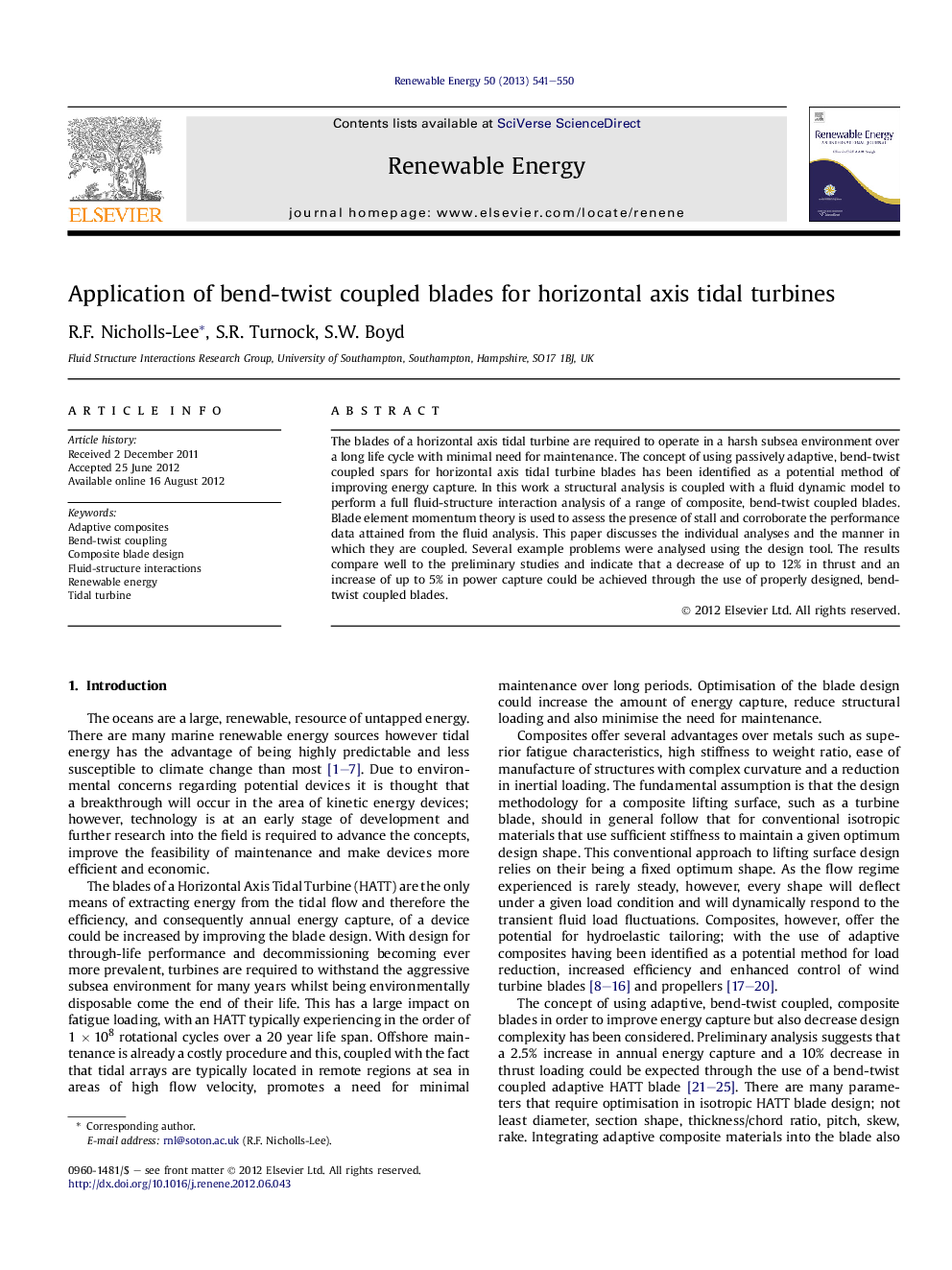| Article ID | Journal | Published Year | Pages | File Type |
|---|---|---|---|---|
| 300408 | Renewable Energy | 2013 | 10 Pages |
The blades of a horizontal axis tidal turbine are required to operate in a harsh subsea environment over a long life cycle with minimal need for maintenance. The concept of using passively adaptive, bend-twist coupled spars for horizontal axis tidal turbine blades has been identified as a potential method of improving energy capture. In this work a structural analysis is coupled with a fluid dynamic model to perform a full fluid-structure interaction analysis of a range of composite, bend-twist coupled blades. Blade element momentum theory is used to assess the presence of stall and corroborate the performance data attained from the fluid analysis. This paper discusses the individual analyses and the manner in which they are coupled. Several example problems were analysed using the design tool. The results compare well to the preliminary studies and indicate that a decrease of up to 12% in thrust and an increase of up to 5% in power capture could be achieved through the use of properly designed, bend-twist coupled blades.
► Novel passively adaptive composite blades for horizontal axis tidal turbines. ► Fluid-structure interaction numerical method for modelling adaptive blades. ► Use of CFD, FEA and BEMT in the fluid-structural numerical model. ► Increase in up to 5% of annual energy capture and 14% decrease in thrust loading.
